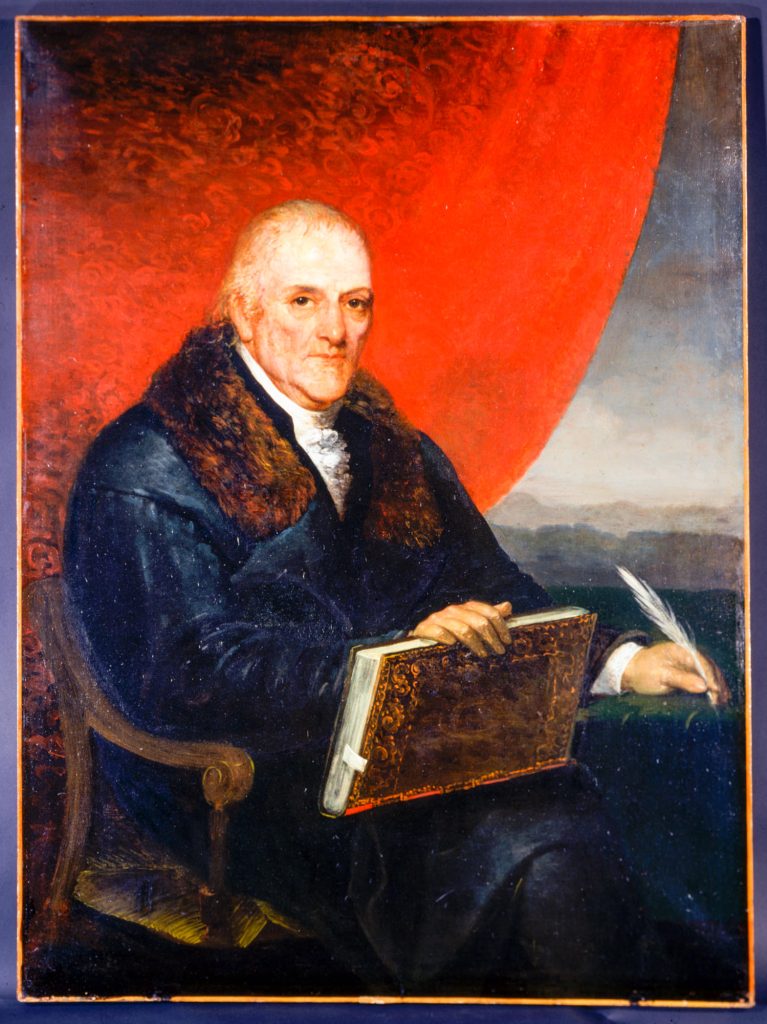The life of Lorenzo Da Ponte bears little similarity to those of themerchants, peddlers and pioneers who make up this database. In fact,it is safe to say that few biographies—anywhere—read anythinglike Da Ponte’s.
Born Emanuele Conegliano in the Jewish ghetto of Ceneda in theRepublic of Venice, the oldest of Geremia Conegliano and RachelPincerle’s three sons, Da Ponte suffered the death of his mother atthe age of five. In 1763 the Coneglianos—father and sons—convertedto Catholicism so Geremia could marry Orsola Pasqua Paietta, who atseventeen was only three years older than the newly christenedLorenzo Da Ponte. This new name derived from the Bishop of Ceneda whoperformed the family’s baptism.
To this point, Da Ponte’s education had been largely neglected,though the young autodidact plunged himself into what literature wasavailable, with particular passion for Metastasio, theeighteenth-century poet and librettist. The Bishop saw in hisnamesake a native, if uncultivated, intelligence and arranged for DaPonte to study at the seminary, putting the Jewish born teenager on apath to the priesthood.
And that’s exactly where he found himself in 1769—ordained andserving on the faculty of the seminary in Portogruaro. Chafing underthe restrictions of life at the seminary, Da Ponte traveled to Venicewhere he became involved with more than a few women—both single andmarried—and developed a passion for gambling. He stood trial forhaving published a series of seditious poems and found himselfdeclared unfit to teach in the republic.
Over the next few years, he would father children with a marriedwoman, befriend the famous Casanova and operate a brothel beforefinally being charged with public concubinage. Fearing the worst, DaPonte absconded from Venice. He was tried in absentia andbanned from reentry for fifteen years.
Meanwhile, he made his way to Vienna where he established himself inliterary and artistic circles, befriending Salieri, his childhoodidol, Metastasio, and the young composer with whom he would mostfruitfully collaborate, Mozart. Da Ponte used his still unworn outconnections to secure for himself the position of official poet forthe Italian Theatre, which the Emperor opened in 1783. His firstcommission, a libretto for a composition by Salieri, Il ricco d’ungiorno, was such a failure that the latter remarked that he wouldsooner cut off his fingers than compose to lyrics by Da Ponte.
Success did follow, however, with Vincenzo Martin y Soler’s IlBurbero, which premiered in 1786 and proved tremendously popular.His next project, however, was far riskier, adapting Beaumarchais’controversial Marriage of Figaro with Mozart, who had notwritten an opera in four years for lack of a competent librettist.Figaro too proved phenomenally popular. Yet, despite theeventual status it would achieve within the operatic repertoire, thatyear it was eclipsed Martin y Soler’s Una Rara Cosa, thereception of which was so enthusiastic, the ladies of Viennesesociety began appearing in public dressed as characters from theopera. This too was a Da Ponte libretto.
During his eight years in Vienna, he wrote libretti in Italian,German, Spanish and French. He continued to collaborate with Martin ySoler, managed to get Salieri to retract his threat ofself-mutilation, writing for him two libretti, and, most famously,worked with Mozart on Così fan tutte and Don Giovanni. In1790 Emperor Joseph II, who had been a great patron of Da Ponte,died. This was followed by the emergence of the sort of amorousintrigues and scandals that had haunted Da Ponte in Venice. The laststraw, however, came when he circulated a defamatory poem concerninga major public official. He was given twenty-four hours to leaveVienna.
The next years oflife were marked by uncertainty, debt, and frequent moves. Da Pontewent to Trieste and then to Prague. He married Ann Celestine Grahlwith whom he had four children. They moved to London where Da Pontefirst continued to write and work with the opera, but eventuallyopened an Italian bookshop. In 1805, to escape debt, he set sail forAmerica.
He spent the next twenty years running a grocery, first in Manhattanand then in Elizabethtown, New Jersey. These pursuits too all endedin bankruptcy. Only in 1825 did things start to turn around—again—forDa Ponte, now in his mid-seventies. New York had begun to cultivate agreater interest and institutional apparatuses for opera. In 1825 DonGiovanni was performed there for the first time as part of avisiting season of Italian opera. That same year, a friend managed tosecure for Da Ponte an appointment as a professor of Italian atColumbia University. The man who had run from the seminary in hisearly twenties—after an extraordinary and bizarre life—hadreturned to the classroom.
